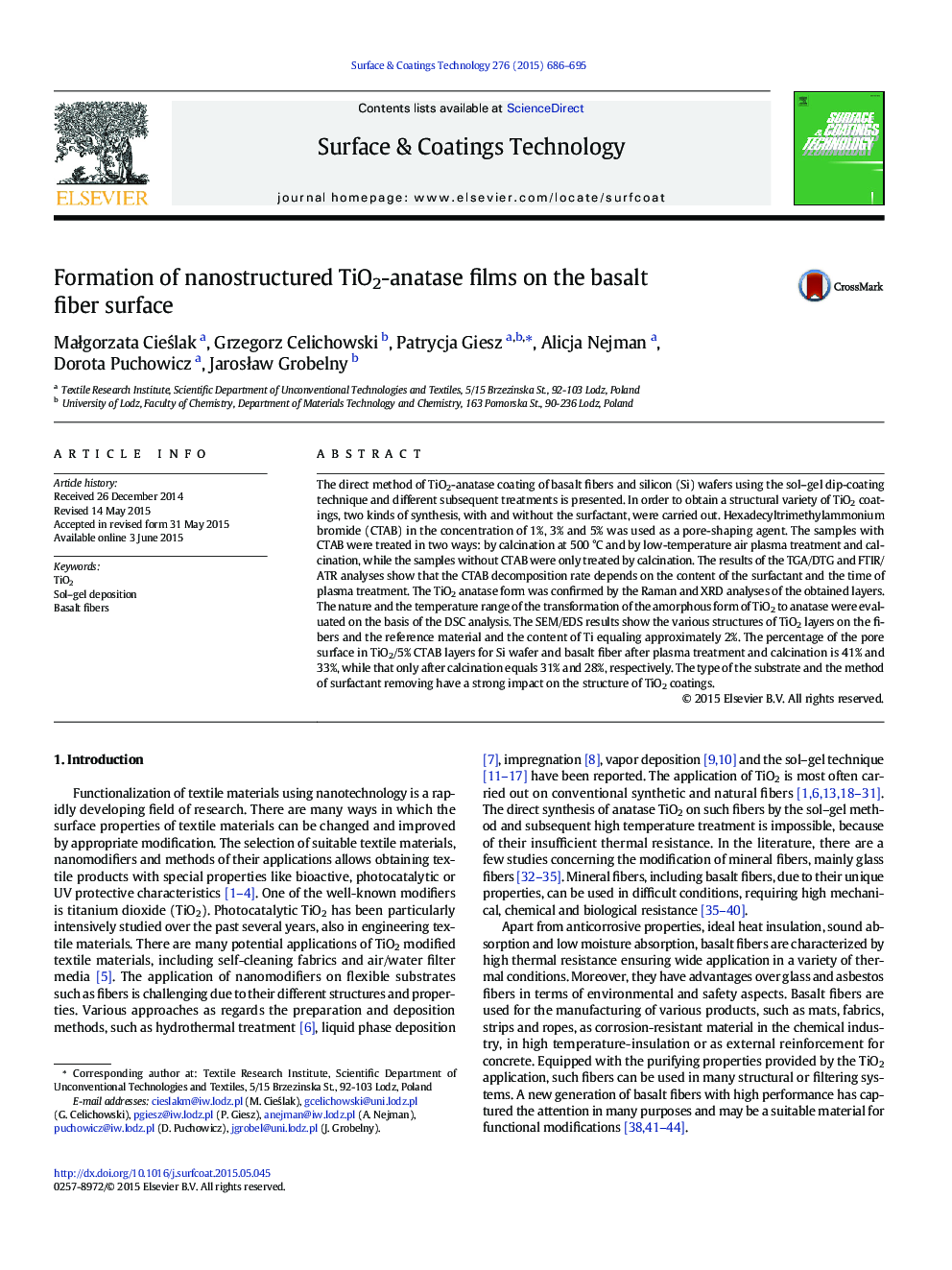| Article ID | Journal | Published Year | Pages | File Type |
|---|---|---|---|---|
| 1657032 | Surface and Coatings Technology | 2015 | 10 Pages |
•Nano-TiO2 films were prepared on the basalt fiber surface using sol–gel technique.•Surfactant addition caused various structures of TiO2 coatings.•CTAB removing by plasma-treatment resulted in the formation of the shaped pores.•TiO2 coating morphology surface depends strongly on the substrate.
The direct method of TiO2-anatase coating of basalt fibers and silicon (Si) wafers using the sol–gel dip-coating technique and different subsequent treatments is presented. In order to obtain a structural variety of TiO2 coatings, two kinds of synthesis, with and without the surfactant, were carried out. Hexadecyltrimethylammonium bromide (CTAB) in the concentration of 1%, 3% and 5% was used as a pore-shaping agent. The samples with CTAB were treated in two ways: by calcination at 500 °C and by low-temperature air plasma treatment and calcination, while the samples without CTAB were only treated by calcination. The results of the TGA/DTG and FTIR/ATR analyses show that the CTAB decomposition rate depends on the content of the surfactant and the time of plasma treatment. The TiO2 anatase form was confirmed by the Raman and XRD analyses of the obtained layers. The nature and the temperature range of the transformation of the amorphous form of TiO2 to anatase were evaluated on the basis of the DSC analysis. The SEM/EDS results show the various structures of TiO2 layers on the fibers and the reference material and the content of Ti equaling approximately 2%. The percentage of the pore surface in TiO2/5% CTAB layers for Si wafer and basalt fiber after plasma treatment and calcination is 41% and 33%, while that only after calcination equals 31% and 28%, respectively. The type of the substrate and the method of surfactant removing have a strong impact on the structure of TiO2 coatings.
